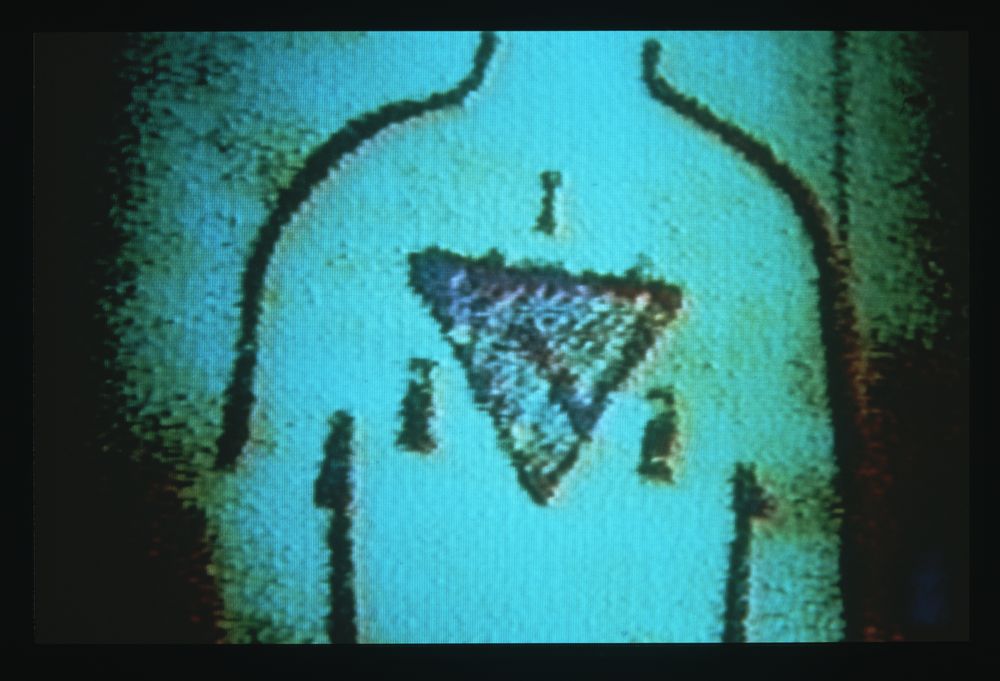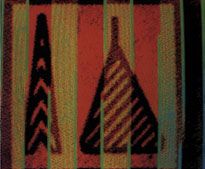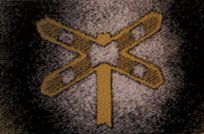ARS ELECTRONICA ARCHIVE - PRIX
Der Prix Ars Electronica Showcase ist eine Sammlung, innerhalb derer die Einreichungen der KünstlerInnen zum Prix seit 1987 durchsucht und gesichtet werden können. Zu den Gewinnerprojekten liegen umfangreiche Informationen und audiovisuelle Medien vor. ALLE weiteren Einreichungen sind mit den Basisdaten in Listenform recherchierbar.
Figure 10
Brian Reffin Smith

Original: ENT_8732c_AEC_PRX_1987_figure10_1405707.tif | 4425 * 3017px | 42.9 MB

Original: PR_1987_gnfigur_001_o.jpg | 205 * 169px | 12.5 KB

Original: PR_1987_gnfigur_003_o.jpg | 204 * 134px | 10.6 KB
Statement
Ich mag den Ausdruck „Computerkunst" nicht. Kunst ist Kunst, und der Einsatz von Computern kann diese Kunst manchmal möglich machen oder technisch helfen oder Ideen, Metaphern, Analogien liefern. Und wenn wir schon ein Etikett verwenden, dann ist vielleicht concept art besser und hat auch eine etwas ehrwürdigere Geschichte...
Es gibt eine Anzahl von sehr wichtigen Fragen im Bereich der Theorie und Praxis der Kunst. Manche betreffen die Entwicklung oder Hinterfragung einer Kulturpolitik, andere - manchmal einander überschneidende - betreffen Probleme der Produktion und Darstellung. In den meisten Kunstformen kann man diese Fragen behandeln, oder auch - leider - ignorieren. Jedenfalls aber werden diese Probleme unvermeidlich, wenn es um den Einsatz von Computern geht - ja, sie kommen geradezu angeflogen.
Und außerdem haben wir uns rund 40 Jahre lang von den Computern verwirren lassen. Sie sind nicht einfach „Informationsverarbeiter", sie sind viel eher „Darstellungsprozessoren" und sie sind zuallererst Kunstgeräte. Und dies ist ja doch von einiger Bedeutung für die Kunst und das Computerwesen, wie ich meine.
Künstlerische und Technische Details
Ich habe auf einem Berliner Flohmarkt ein altes russisches Medizin-Buch entdeckt, das sich mit dem Herzen beschäftigt. Einige der darin enthaltenen Bilder waren besonders lebhaft und eindrucksvoll und haben mich zur vorliegenden Arbeit angeregt. Der Umriß der Figur (ein Begriff, der sowohl die äußere Form als auch das Skizzenhafte einfängt) und die stilisierte Darstellung des Herzens erschienen mir eher kalt, als ich sie ursprünglich gestaltete. Aber - und ist das wirklich paradox? - als ich an diesen Ideen mit dem Computer arbeitete, veränderte sich meine Auffassung, und die Bilder erschienen mir ambivalent und wärmer.
Manchmal fängt man bei einigen Fragen an und sucht eine Lösung oder einen Ausdruck dafür in der Kunst. Im vorliegenden Fall war das Ganze mehr ein steter Wechsel in der Betrachtung des Bildes als Problem und Lösung.
Dies reflektiert auch die technische Seite der Bildproduktion (es existiert als Farbdia vom Bildschirm, kann aber auch als große, farbige Leinwand vom Dia kopiert werden). Das Bild tauchte erstmals auf, als ich es elektronisch "malte", indem ich mit einem Joystick direkt in die Memory eines BBC Model B Computers eingab.
Das Bild wurde dann mit verschiedenen selbstgeschriebenen BASlC-Programmen weiterverarbeitet. Um etwas von der Härte des Urbildes wegzukommen, wurde das Bild über eine Videoverbindung abgenommen und wieder in die Graphic Memory eingegeben, wo es als zwar weniger exaktes, aber anders faßliches Bild wieder zur Verfügung stand.
Letztlich wurde zur Anfertigung des Farbdias ein sehr schlechter Video-Monitor eingesetzt.
Um schließlich das Farbdia zu erhalten, wurde bewußt ein von der Qualität her schlechter Video-Monitor benutzt.
Ich mag den Ausdruck „Computerkunst" nicht. Kunst ist Kunst, und der Einsatz von Computern kann diese Kunst manchmal möglich machen oder technisch helfen oder Ideen, Metaphern, Analogien liefern. Und wenn wir schon ein Etikett verwenden, dann ist vielleicht concept art besser und hat auch eine etwas ehrwürdigere Geschichte...
Es gibt eine Anzahl von sehr wichtigen Fragen im Bereich der Theorie und Praxis der Kunst. Manche betreffen die Entwicklung oder Hinterfragung einer Kulturpolitik, andere - manchmal einander überschneidende - betreffen Probleme der Produktion und Darstellung. In den meisten Kunstformen kann man diese Fragen behandeln, oder auch - leider - ignorieren. Jedenfalls aber werden diese Probleme unvermeidlich, wenn es um den Einsatz von Computern geht - ja, sie kommen geradezu angeflogen.
Und außerdem haben wir uns rund 40 Jahre lang von den Computern verwirren lassen. Sie sind nicht einfach „Informationsverarbeiter", sie sind viel eher „Darstellungsprozessoren" und sie sind zuallererst Kunstgeräte. Und dies ist ja doch von einiger Bedeutung für die Kunst und das Computerwesen, wie ich meine.
Künstlerische und Technische Details
Ich habe auf einem Berliner Flohmarkt ein altes russisches Medizin-Buch entdeckt, das sich mit dem Herzen beschäftigt. Einige der darin enthaltenen Bilder waren besonders lebhaft und eindrucksvoll und haben mich zur vorliegenden Arbeit angeregt. Der Umriß der Figur (ein Begriff, der sowohl die äußere Form als auch das Skizzenhafte einfängt) und die stilisierte Darstellung des Herzens erschienen mir eher kalt, als ich sie ursprünglich gestaltete. Aber - und ist das wirklich paradox? - als ich an diesen Ideen mit dem Computer arbeitete, veränderte sich meine Auffassung, und die Bilder erschienen mir ambivalent und wärmer.
Manchmal fängt man bei einigen Fragen an und sucht eine Lösung oder einen Ausdruck dafür in der Kunst. Im vorliegenden Fall war das Ganze mehr ein steter Wechsel in der Betrachtung des Bildes als Problem und Lösung.
Dies reflektiert auch die technische Seite der Bildproduktion (es existiert als Farbdia vom Bildschirm, kann aber auch als große, farbige Leinwand vom Dia kopiert werden). Das Bild tauchte erstmals auf, als ich es elektronisch "malte", indem ich mit einem Joystick direkt in die Memory eines BBC Model B Computers eingab.
Das Bild wurde dann mit verschiedenen selbstgeschriebenen BASlC-Programmen weiterverarbeitet. Um etwas von der Härte des Urbildes wegzukommen, wurde das Bild über eine Videoverbindung abgenommen und wieder in die Graphic Memory eingegeben, wo es als zwar weniger exaktes, aber anders faßliches Bild wieder zur Verfügung stand.
Letztlich wurde zur Anfertigung des Farbdias ein sehr schlechter Video-Monitor eingesetzt.
Um schließlich das Farbdia zu erhalten, wurde bewußt ein von der Qualität her schlechter Video-Monitor benutzt.
Geboren 1946 in Sudbury/Suffolk in Großbritannien. Besuchte die Brunel University/London und das Royal College of Art in London (1975 - 1977), das er mit dem Master of Art abschließt. Brian R. Smith ist seitdem Künstler, Autor und Lehrer an verschiedenen Kunstschulen, darunter von 1978-1984 Dozent für Computer im Bereich Kunst und Design am Royal College of Art in London; ab 1985 Organisator von Studiengängen an Kunstschulen in Frankreich und England.
Seit 1967 arbeitet er als Künstler im Spannungsfeld von Kunst und Technologie im Sinne der Concept Art, indem er den Computer als Werkzeug, interaktives System und Metapher benützt.
Brian R. Smith's Arbeiten wurden bislang in London, Helsinki, Polen und Berlin gezeigt. Zudem war er mit seinen Arbeiten bei Gruppenausstellungen zu Computer-Kunst-Design beteiligt. 1982/83 organisierte er die Schau „Artist-Computer-Art", die in Paris, London und Belfast gezeigt wurde.
Geplante Ausstellungen: Französisches Kulturministerium, Paris 1987; Zwinger Galerie, Berlin 1988; Everson Museum, New York (Gruppenschau) 1988. Brian R. Smith lebt und arbeitet derzeit in Berlin.
Titel der für den Prix Ars Electronica '87 eingereichten Graphiken:
1 „Sign 4", Berlin 1987
2 „Figure 3", Berlin 1987
3 „Figure 10“, Berlin 1987
Für seine Computergraphik „Figure 10" erhielt er von der Jury den Prix Ars Electronica '87 für Computergraphik zugesprochen.
Brian R. Smith als Buchautor:
„Design for Need", Pergamon, Oxford 1976 (Beiträge)
„Introduction to Computers“, Usbourne Publishing Co, London 1981
„Introducing BASIC", Usborne, London 1982
„Better BASIC", Usbourne, London 1983
„Understanding Computers", Marksand Spencer, London 1983
„Soft Computing: Art 8 Design", Addison- Wesley, Workingham, England 1985
„Science and Art“, FvVF, Utrecht 1986 (Beiträge)
Dazu Veröffentlichungen in mehr als 30 internationalen Zeitschriften zum Thema „Computer in Kunst und Design".
Seit 1967 arbeitet er als Künstler im Spannungsfeld von Kunst und Technologie im Sinne der Concept Art, indem er den Computer als Werkzeug, interaktives System und Metapher benützt.
Brian R. Smith's Arbeiten wurden bislang in London, Helsinki, Polen und Berlin gezeigt. Zudem war er mit seinen Arbeiten bei Gruppenausstellungen zu Computer-Kunst-Design beteiligt. 1982/83 organisierte er die Schau „Artist-Computer-Art", die in Paris, London und Belfast gezeigt wurde.
Geplante Ausstellungen: Französisches Kulturministerium, Paris 1987; Zwinger Galerie, Berlin 1988; Everson Museum, New York (Gruppenschau) 1988. Brian R. Smith lebt und arbeitet derzeit in Berlin.
Titel der für den Prix Ars Electronica '87 eingereichten Graphiken:
1 „Sign 4", Berlin 1987
2 „Figure 3", Berlin 1987
3 „Figure 10“, Berlin 1987
Für seine Computergraphik „Figure 10" erhielt er von der Jury den Prix Ars Electronica '87 für Computergraphik zugesprochen.
Brian R. Smith als Buchautor:
„Design for Need", Pergamon, Oxford 1976 (Beiträge)
„Introduction to Computers“, Usbourne Publishing Co, London 1981
„Introducing BASIC", Usborne, London 1982
„Better BASIC", Usbourne, London 1983
„Understanding Computers", Marksand Spencer, London 1983
„Soft Computing: Art 8 Design", Addison- Wesley, Workingham, England 1985
„Science and Art“, FvVF, Utrecht 1986 (Beiträge)
Dazu Veröffentlichungen in mehr als 30 internationalen Zeitschriften zum Thema „Computer in Kunst und Design".


